🌟🎨 "UNESCO World Heritage Sites" Coloring Series 🎨🌟
🏰✨ Explore the wonders of the world through coloring! 🌍
From the Eiffel Tower and Colosseum to the Taj Mahal and Great Wall of China, this collection captures the beauty of UNESCO World Heritage sites! 🎨✨ Bring these historic landmarks to life with your own colors! 🌈🖌️ Experience the feeling of traveling the world from the comfort of your home! ✈️💖
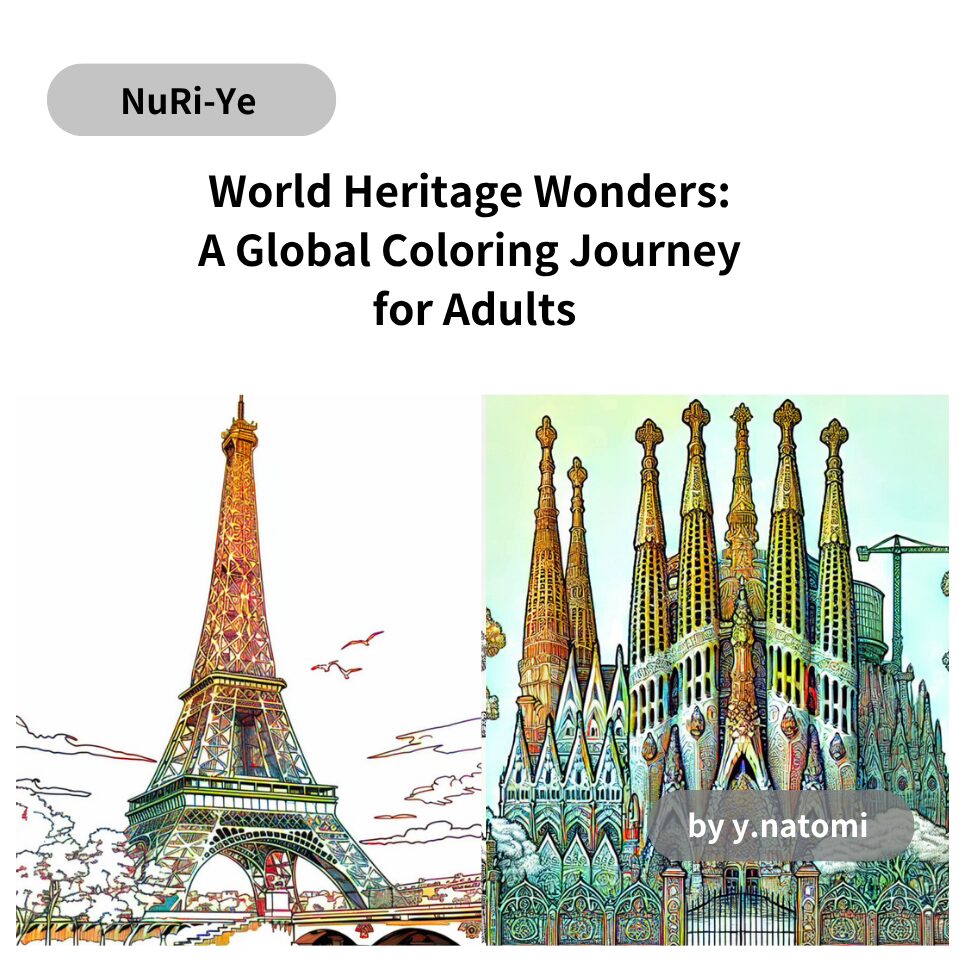
The coloring book consists of 98 pages (21 cm × 21 cm) in an open-flat format.
It features original coloring pages of 24 tourist spot themes, arranged in the following structure.
・Even-numbered pages feature bold-lined coloring bases.
・Odd-numbered pages feature light-lined coloring bases.
※ the back side of each page is left blank without any printing.
View the Amazon Book Page Here
Coloring Theme Table of Contents
| 1. Sagrada Familia (Spain) | 11. Mont Saint-Michel (France) | 21. Big Ben (United Kingdom) |
| 2. Eiffel Tower (France) | 12. Metropolitan Cathedral in Mexico City (Mexico) | 22. Angkor Wat (Cambodia) |
| 3. Taj Mahal (India) | 13. Machu Picchu (Peru) | 23. Alhambra (Spain) |
| 4. Sydney Opera House (Australia) | 14. Leaning Tower of Pisa (Italy) | 24. Neuschwanstein Castle (Germany) |
| 5. Statue of Liberty (United States) | 15. Château de Chantilly (France) | |
| 6. Saint Basil's Cathedral (Russia) | 16. Hagia Sophia (Turkey) | |
| 7. Schönbrunn Palace (Austria) | 17. Great Wall (China) | |
| 8. Petra (Jordan) | 18. Colosseum (Italy) | |
| 9. Parthenon (Greece) | 19. Casa Milà by Gaudí (Spain) | |
| 10. Notre-Dame Cathedral (France) | 20. Buckingham Palace (United Kingdom) |
Click here to view the "What Is a UNESCO World Heritage Site" and "Highlights of Tourist Attractions."
If you want to see other coloring themes, go to ⇒ Theme Search Map.
Completed Coloring Sample
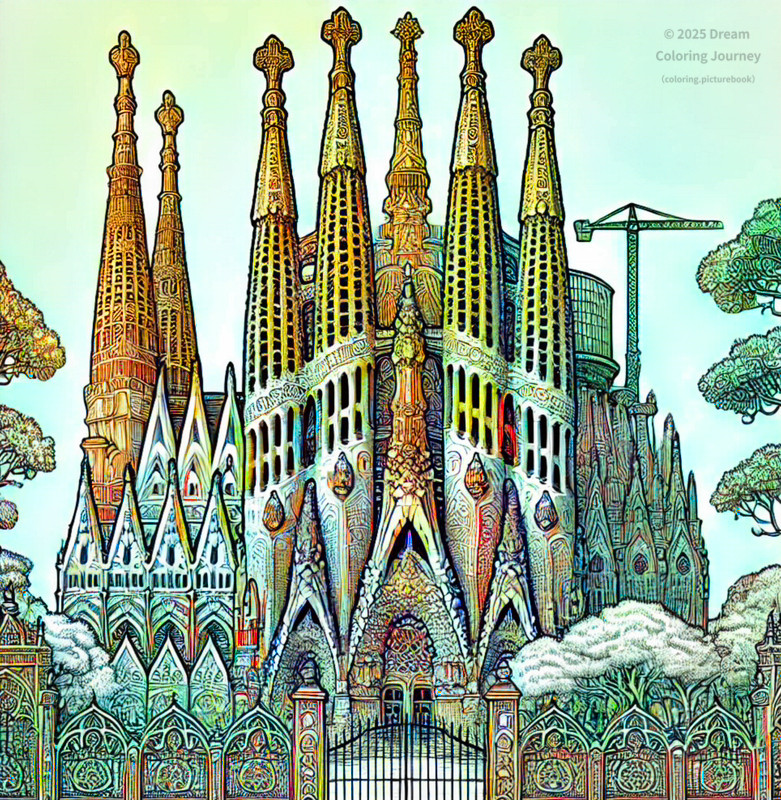
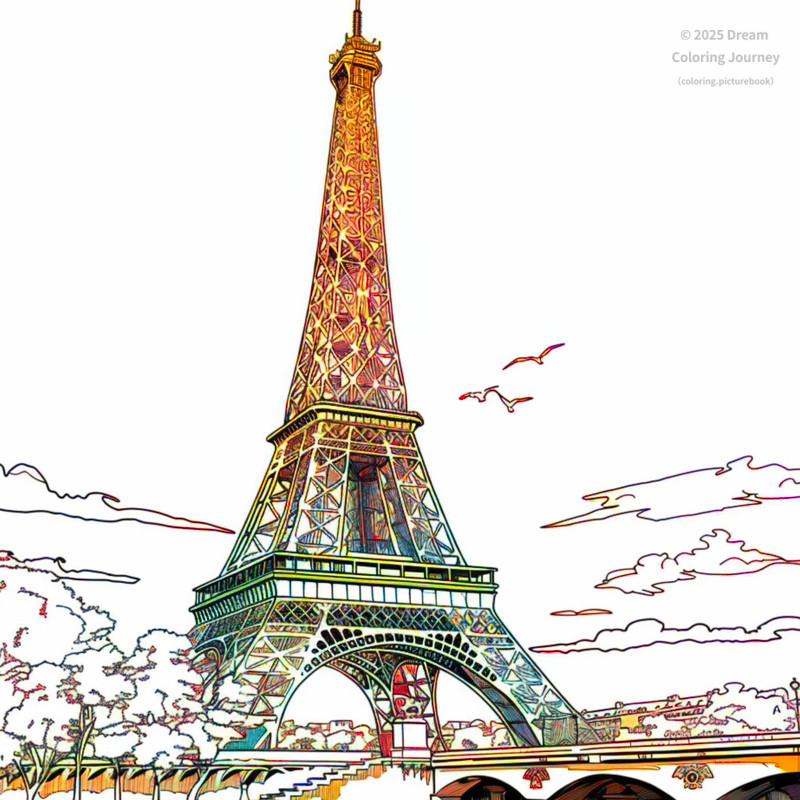
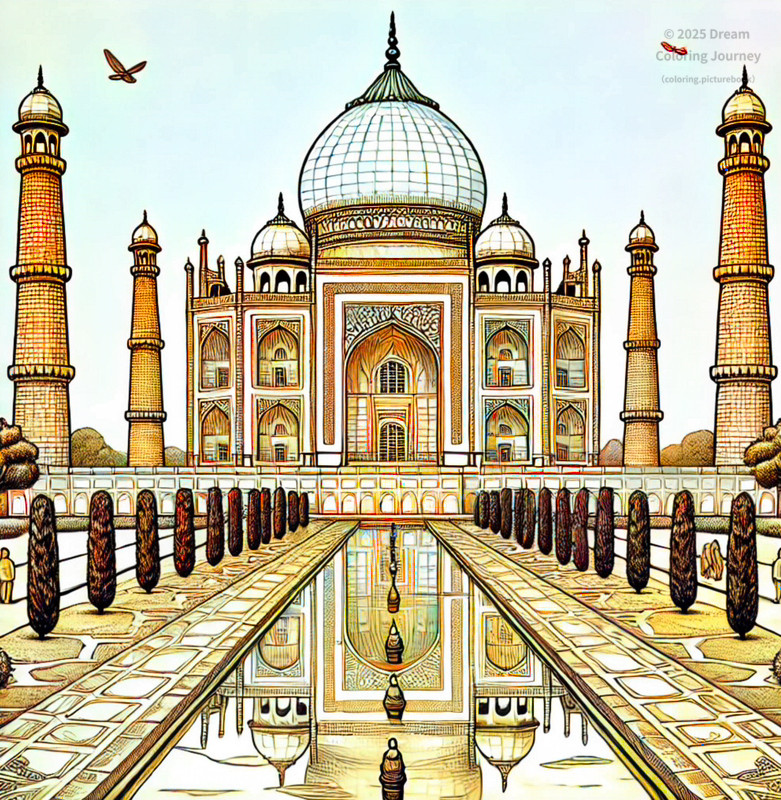

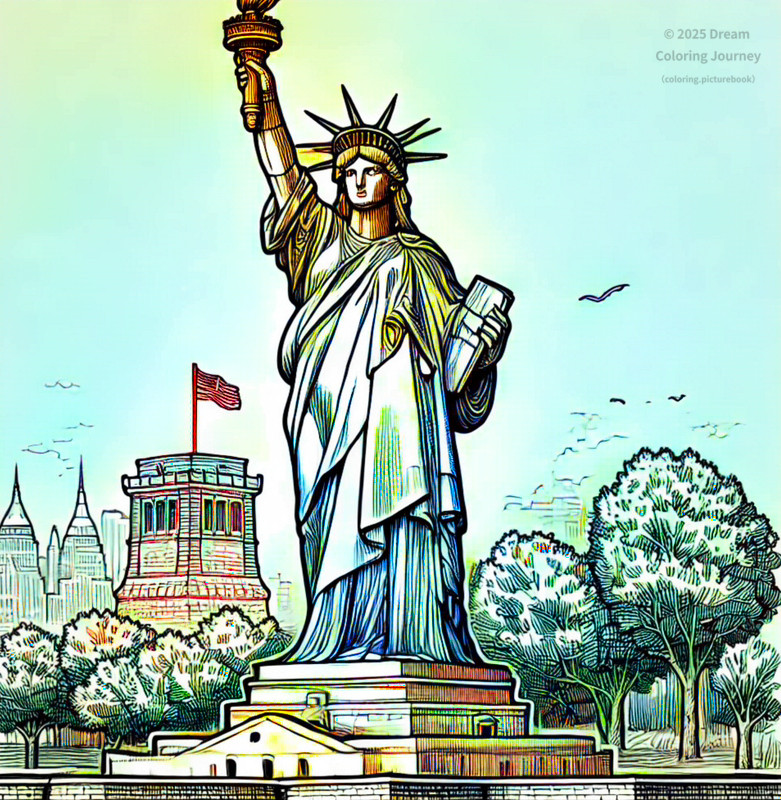
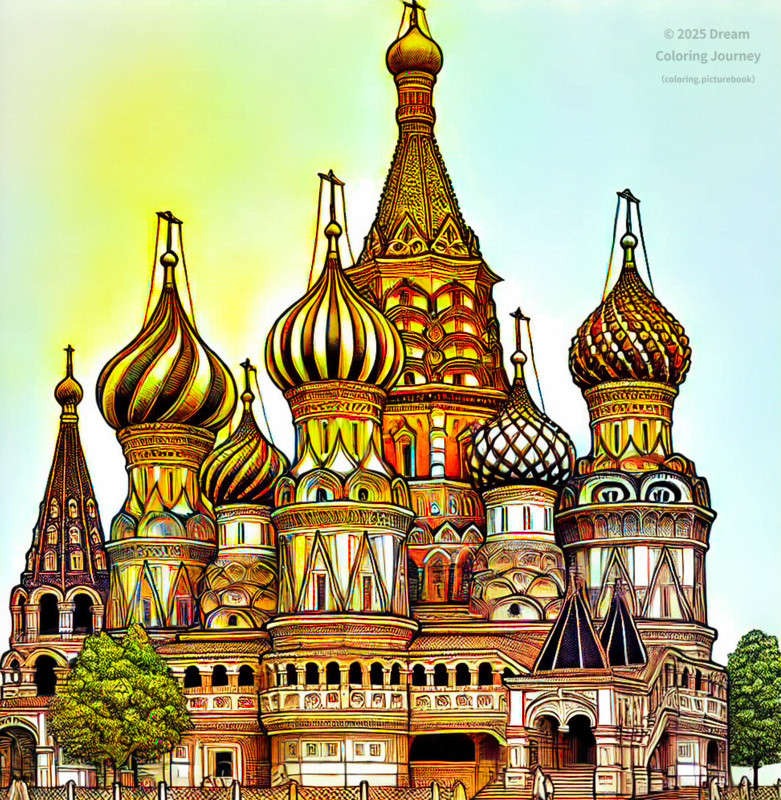

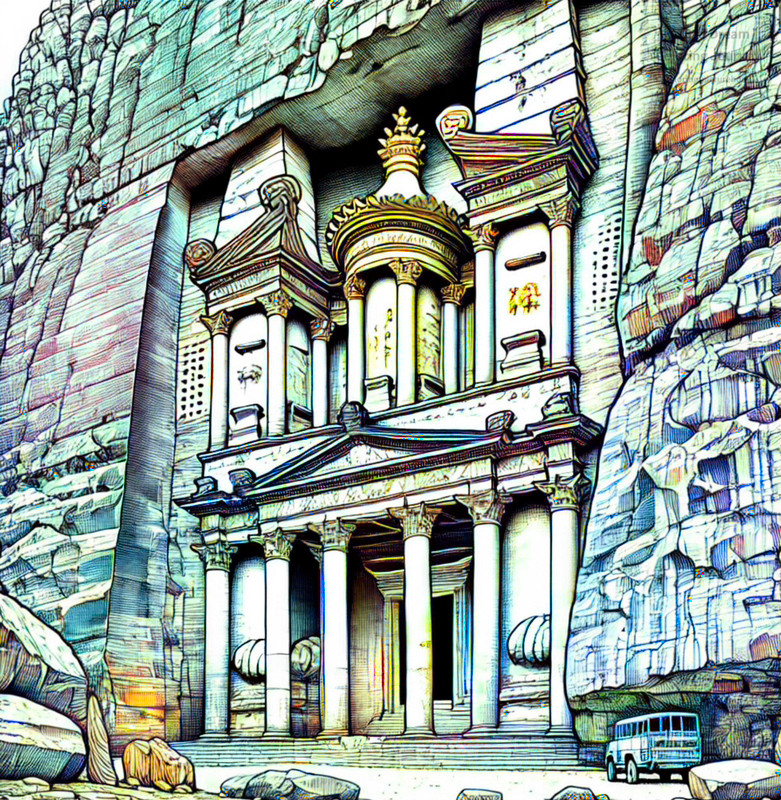


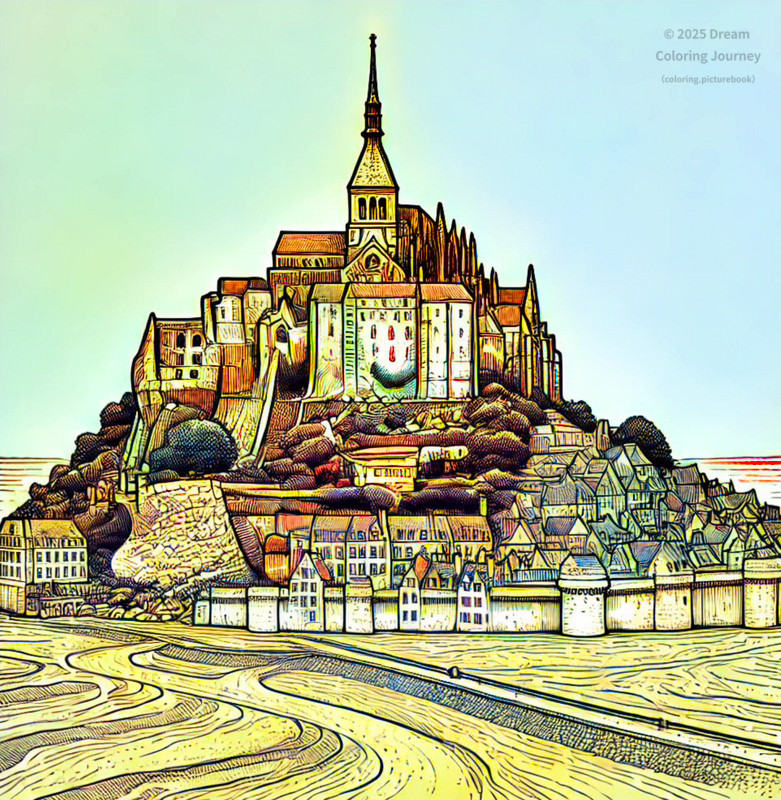
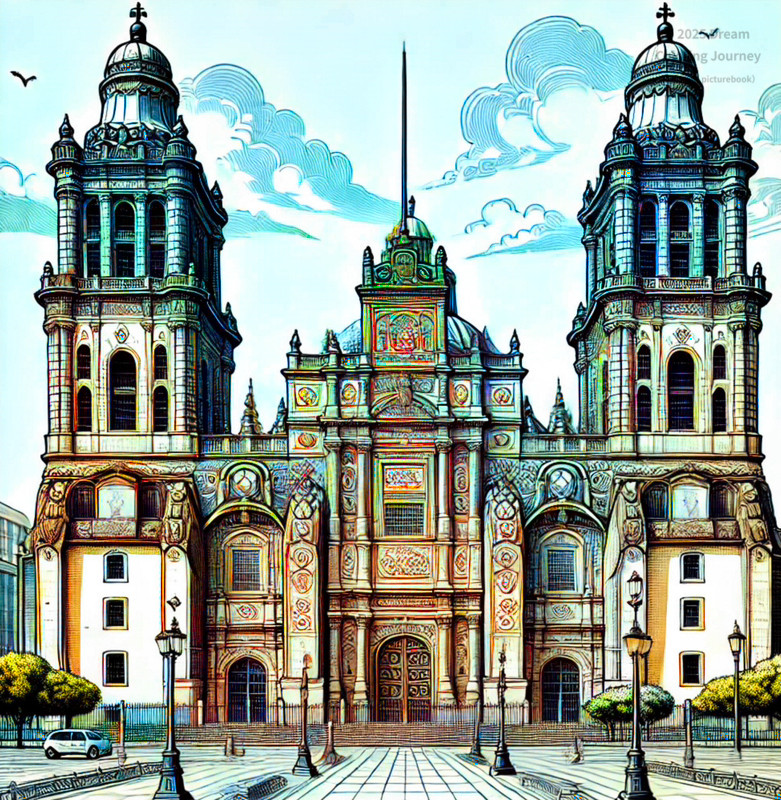
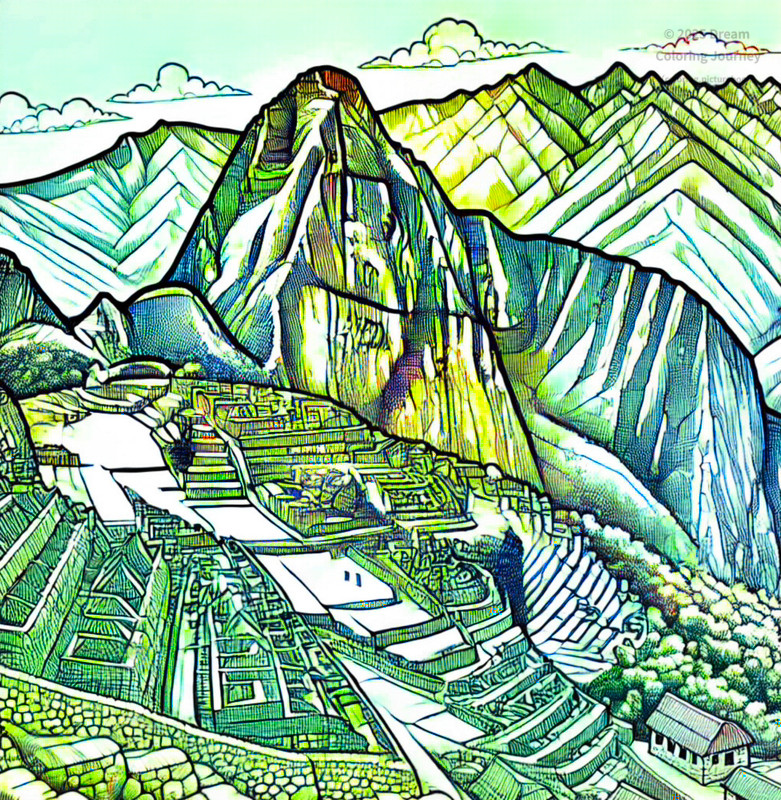

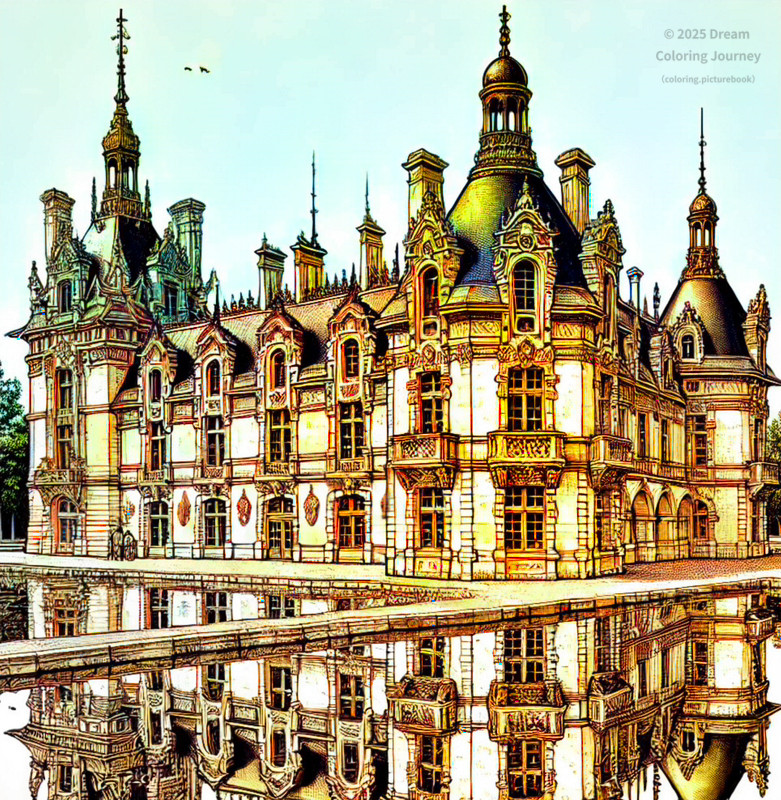
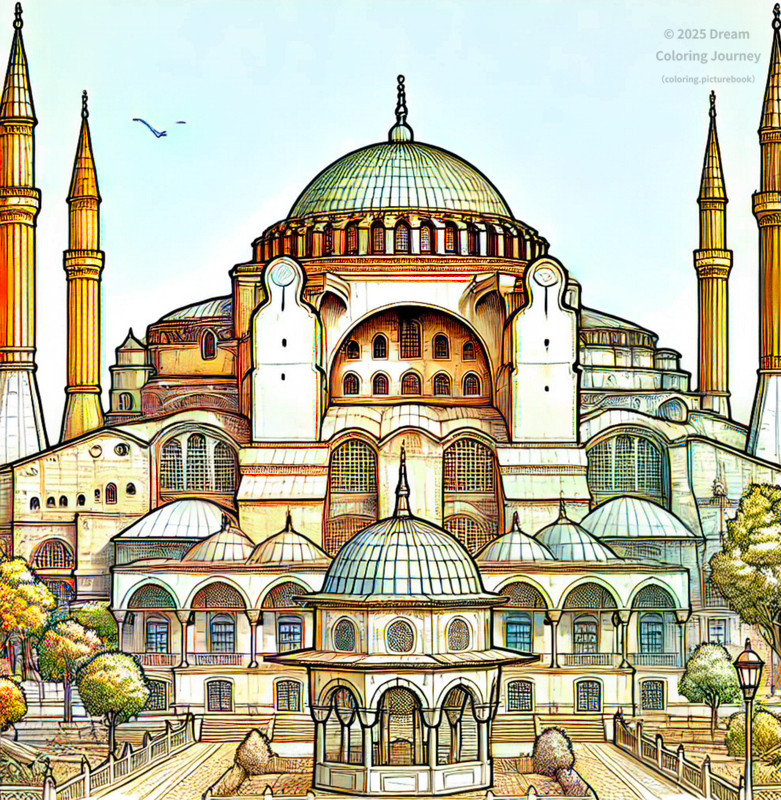
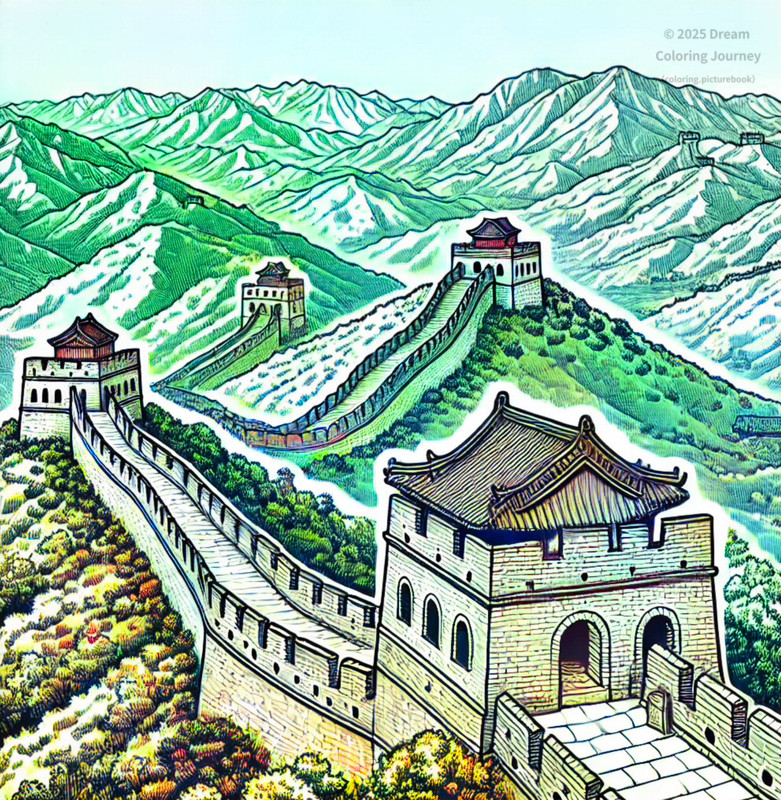
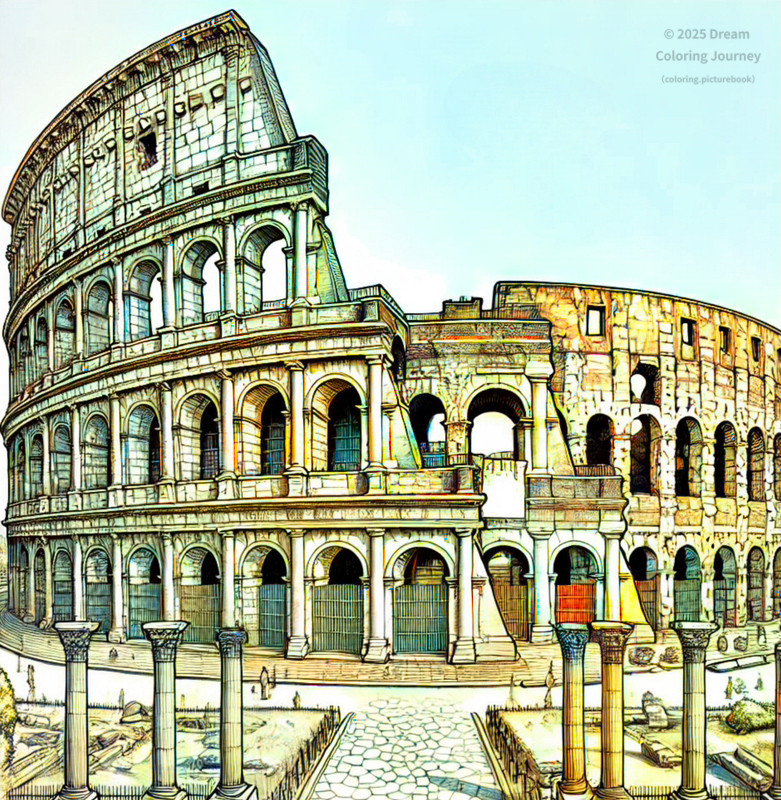
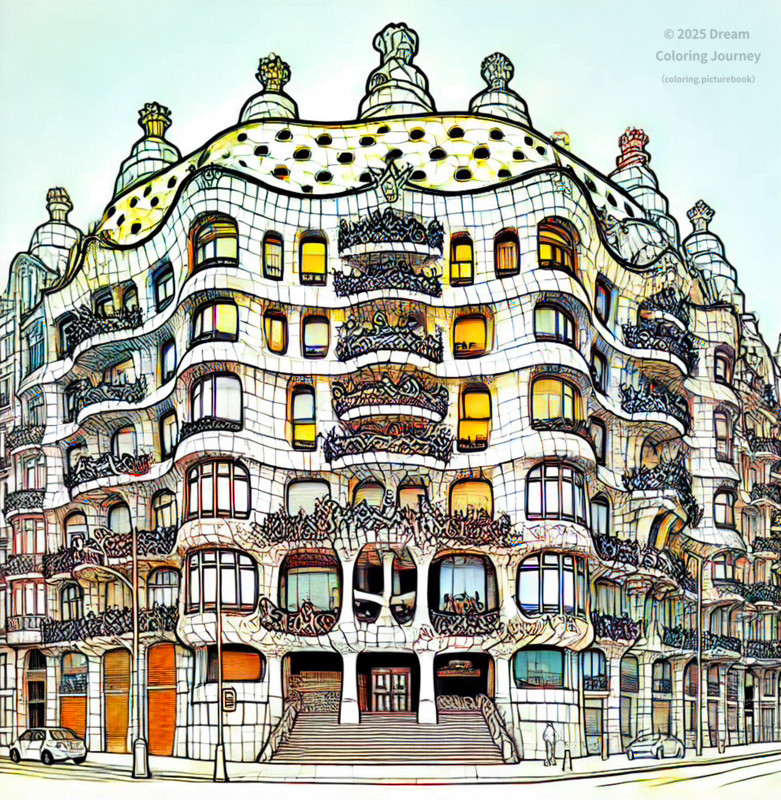

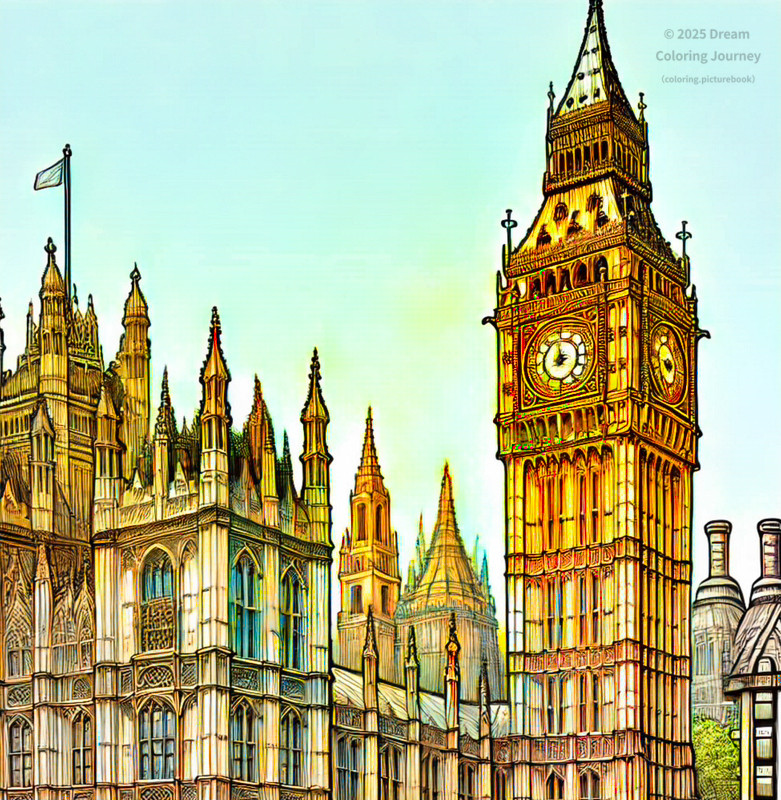
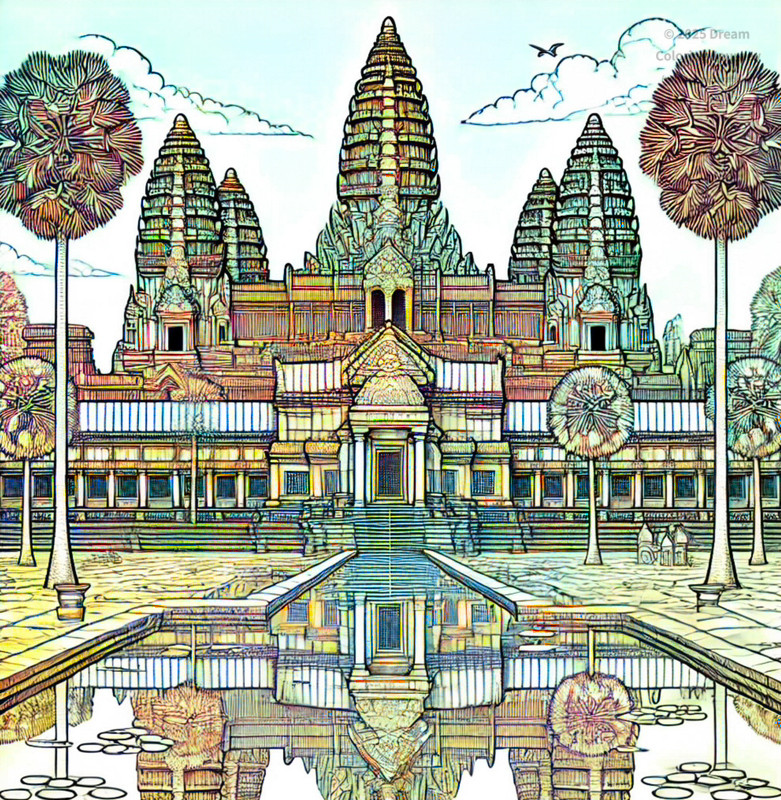
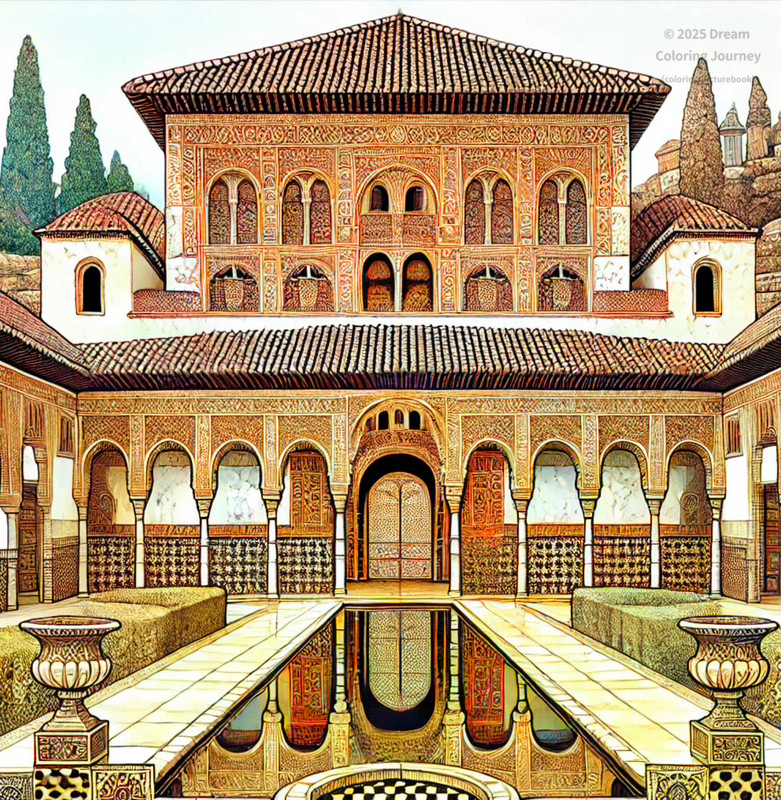
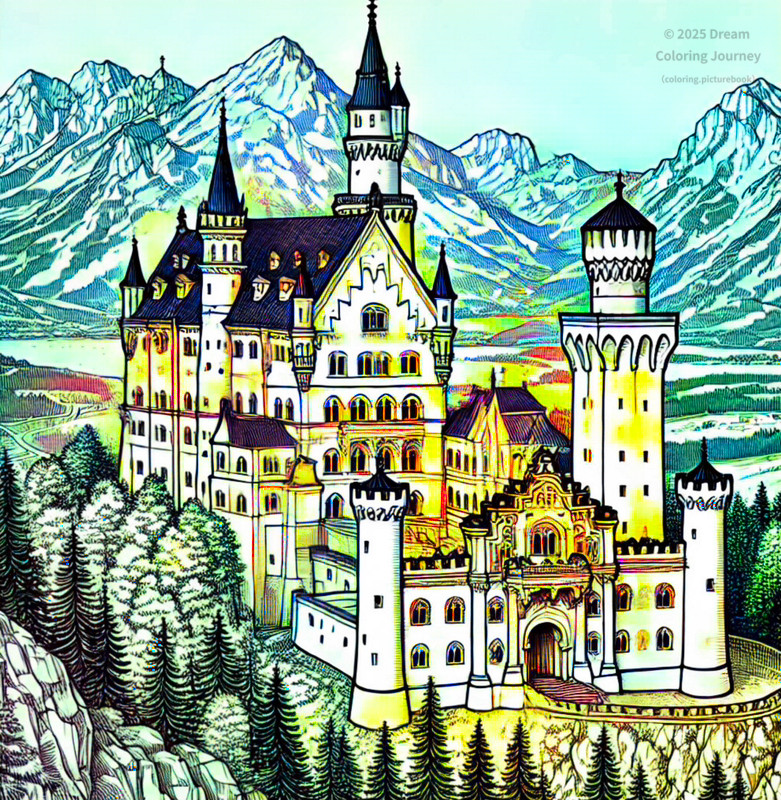
If you want to see other coloring themes, go to ⇒ Theme Search Map.
How to Purchase a Coloring Book
From the link below, you will be redirected to the Amazon Books site where you can purchase the corresponding paperback.
The book is printed in high-quality black-and-white for coloring and is available in English only.
Please refer to the "Coloring Page Sample" on this blog for inspiration, and enjoy coloring freely.

The coloring book consists of 98 pages (21 cm × 21 cm) in an open-flat format.
It features original coloring pages of 24 tourist spot themes, arranged in the following structure.
・Even-numbered pages feature bold-lined coloring bases.
・Odd-numbered pages feature light-lined coloring bases.
※ the back side of each page is left blank without any printing.
View the Amazon Book Page Here
🌍 What Is a UNESCO World Heritage Site [2025 Edition]
✨ UNESCO World Heritage: Protecting Humanity’s Treasures
Across the globe, there are countless “treasures” that tell the story of human history, culture, and the wonders of nature.
UNESCO World Heritage is an international effort to protect these treasures and pass them on to future generations.
📜 The Beginning of World Heritage
In 1972, UNESCO (United Nations Educational, Scientific and Cultural Organization) adopted the “Convention Concerning the Protection of the World Cultural and Natural Heritage.”
This established a global system for registering places, buildings, and landscapes of outstanding value as “World Heritage Sites” and ensuring their international protection.
🗂 Categories of World Heritage
World Heritage Sites are mainly divided into three categories:
- Cultural Heritage: Monuments, archaeological sites, religious architecture—symbols of human history and culture
- Natural Heritage: Beautiful landscapes, rare ecosystems, unique landforms—the miracles of nature
- Mixed Heritage: Places that combine both cultural and natural values
🏆 Criteria for Registration
To be listed as a World Heritage Site, a place must meet strict criteria set by UNESCO.
These include being a “masterpiece of human creative genius,” “evidence of significant cultural exchange,” or a site of “exceptional natural beauty,” among a total of 10 selection criteria.
🌏 The Role of World Heritage
World Heritage Sites are much more than tourist attractions.
They are treasures to be protected by all humanity, a source of pride for each country and region, and true gems of our world.
Their preservation and use require international cooperation. For travelers, they offer unique opportunities to experience different cultures and history first-hand.
✨ World Heritage Site Rankings by Country (Top 10 as of June 2025)
As of June 2025, here are the countries with the most World Heritage Sites:
(Based on the official results of the 46th World Heritage Committee session in 2024)
| Rank | Country | Sites |
|---|---|---|
| 1 | 🇮🇹 Italy | 60 |
| 2 | 🇨🇳 China | 59 |
| 3 | 🇩🇪 Germany | 54 |
| 4 | 🇫🇷 France | 52 |
| 5 | 🇪🇸 Spain | 50 |
| 6 | 🇮🇳 India | 43 |
| 7 | 🇲🇽 Mexico | 35 |
| 7 | 🇬🇧 United Kingdom | 35 |
| 9 | 🇷🇺 Russia | 32 |
| 10 | 🇮🇷 Iran | 28 |
As of June 2025, there are 1,223 World Heritage Sites worldwide .
💬 Conclusion
UNESCO World Heritage is an international promise to pass on the history, diverse cultures, and irreplaceable nature of our planet as “heritage for all humanity.”
Why not visit a World Heritage Site and experience their value and wonder for yourself?
🌟Highlights of 24 Travel Guide
- Sagrada Familia (Barcelona, Spain)
Designed by Antoni Gaudí, this still-unfinished basilica is inscribed as part of the "Works of Antoni Gaudí" World Heritage site. Its unique architecture fascinates visitors worldwide. Expected completion is after 2026. Best season: spring to autumn. About 15 minutes by metro from central Barcelona. Recommended visit time: 2 hours. Best photo: Nativity façade. - Eiffel Tower (Paris, France)
Completed in 1889, this iconic iron structure is not a World Heritage Site but is within the buffer zone of "Paris, Banks of the Seine." Best visited spring to autumn. Accessible by metro; 5-minute walk from nearest station. Stay: 1–2 hours. Photo spot: across the Seine River. - Taj Mahal (Agra, India)
A white marble mausoleum built in 1653 as a symbol of love. A UNESCO World Heritage Site. Magical at sunrise/sunset. Best season: Oct–Mar. 20 minutes by car from Agra Station. Stay: 2 hours. Photo: reflection in central pool. - Sydney Opera House (Sydney, Australia)
A sail-shaped performance center, World Heritage listed. Opened in 1973. Best in spring (Sep–Nov). Walking distance from central Sydney. Visit time: 1–2 hours. Photo: sunset from Harbour Bridge. - Statue of Liberty (New York, USA)
Gifted by France in 1886, this symbol of freedom is a World Heritage Site. Ferry from Battery Park takes 15 minutes. Visit: 2 hours. Best photos from ferry or park. - Saint Basil's Cathedral (Moscow, Russia)
Built in the 16th century by Ivan the Terrible, part of "Kremlin and Red Square" World Heritage Site. Famous for colorful onion domes. Visit time: 1 hour. Best photos: front view and night illumination. - Schönbrunn Palace (Vienna, Austria)
Former summer residence of the Habsburgs, part of "Schönbrunn Palace and Gardens" World Heritage Site. Best in spring and summer. 15 minutes by subway. Stay: 2–3 hours. Photo: from Gloriette. - Petra (Southern Jordan)
Ancient capital of the Nabataeans, inscribed as "Petra" World Heritage Site. Best in spring/autumn. 3 hours by car from Amman. Stay: 3+ hours. Photo: view of Treasury from Siq. - Parthenon (Athens, Greece)
5th century BC temple, part of the "Acropolis of Athens" World Heritage Site. Best visited in spring/autumn. Walkable from central Athens. Stay: 1–1.5 hours. Photo: from Acropolis Hill or night view. - Notre-Dame Cathedral (Paris, France)
12th-century Gothic cathedral, part of "Paris, Banks of the Seine" World Heritage Site. Reopened in Dec 2024 after 2019 fire. Best season: spring/autumn. Visit time: 1 hour. Photo: from the Seine. - Mont Saint-Michel (Normandy, France)
Abbey island with tidal effects, listed as "Mont-Saint-Michel and its Bay." 4 hours from Paris by TGV & bus. Stay: 3 hours. Photo: sunset view from across the bay. - Metropolitan Cathedral (Mexico City, Mexico)
One of the largest in the Americas, started in the 16th century. Part of "Historic Centre of Mexico City and Xochimilco." Best in dry season (Nov–Apr). Located in Zócalo. Visit time: 1 hour. Best photo: from plaza. - Machu Picchu (Andes, Peru)
15th-century Inca city, part of "Historic Sanctuary of Machu Picchu." Dry season (May–Sep) is best. 4 hours from Cusco by train & bus. Stay: half day. Photo: from mountain top. - Leaning Tower of Pisa (Pisa, Italy)
Begun in 1173, part of "Piazza del Duomo, Pisa" World Heritage Site. Best season: spring to autumn. 20-minute walk from Pisa Central Station. Visit: 1 hour. Photo: supporting pose. - Château de Chantilly (near Paris, France)
French Renaissance castle with gardens and art museum. Not a World Heritage Site but culturally significant. 25 minutes by train from Gare du Nord. Visit: 2 hours. Photo: across the pond. - Hagia Sophia (Istanbul, Turkey)
6th-century structure, part of "Historic Areas of Istanbul" World Heritage Site. Reconverted into mosque in 2020. Spring/autumn is best. Tram ride from center. Visit: 1 hour. Photo: from square or inside mosaics. - Great Wall (China)
Largest wall system in the world, UNESCO-listed. Built 7th century BC–17th century AD. Best in spring/autumn. 2 hours from Beijing (Badaling). Stay: half day. Photo: from viewpoint. - Colosseum (Rome, Italy)
Roman amphitheater built in 80 AD, part of "Historic Centre of Rome" World Heritage Site. Best in spring/autumn. Walkable from central Rome. Visit: 1–2 hours. Photo: exterior/interior, night lights. - Casa Milà (Barcelona, Spain)
Designed by Gaudí, completed in 1910. Part of "Works of Antoni Gaudí" World Heritage Site. Visit spring to autumn. Walkable from center. Visit: 1 hour. Photo: rooftop & curving façade. - Buckingham Palace (London, UK)
Not a World Heritage Site, but an iconic royal residence. Interior open in summer. Central London, walkable. Visit: 1–2 hours. Photo: from gates, Guard Changing Ceremony. - Big Ben (London, UK)
Officially "Elizabeth Tower," part of "Palace of Westminster and Westminster Abbey" World Heritage Site. Tours limited to UK residents. Spring–autumn is best. Visit: 30–60 min. Photo: across Thames. - Angkor Wat (Siem Reap, Cambodia)
Main temple of "Angkor" World Heritage Site. Built in 12th century. Dry season (Nov–Feb) best. 20 min by tuk-tuk. Visit: 3+ hours. Photo: sunrise reflection. - Alhambra (Granada, Spain)
13–14th century Islamic palace, part of "Alhambra, Generalife and Albayzín" World Heritage Site. Best: spring/autumn. 15 min by bus from center. Visit: 2–3 hours. Photo: through palace arches. - Neuschwanstein Castle (Bavaria, Germany)
19th-century fairytale castle. Not a World Heritage Site, but iconic. Best in spring/autumn. 2.5 hours from Munich. Visit: 2 hours. Photo: from Marienbrücke bridge.